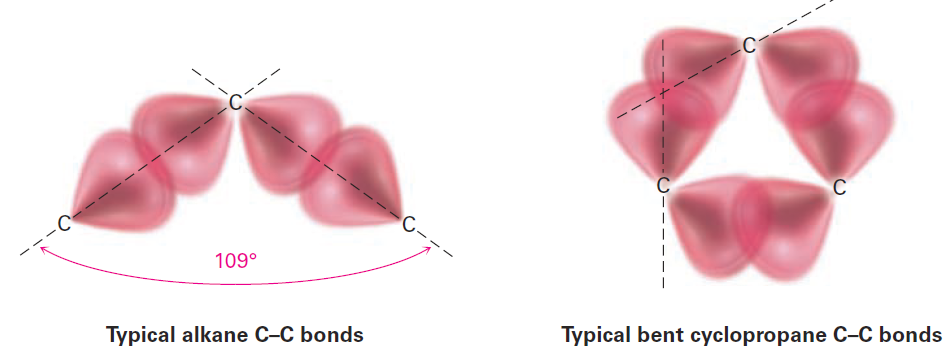

علم الكيمياء

تاريخ الكيمياء والعلماء المشاهير

التحاضير والتجارب الكيميائية

المخاطر والوقاية في الكيمياء

اخرى

مقالات متنوعة في علم الكيمياء

كيمياء عامة


الكيمياء التحليلية

مواضيع عامة في الكيمياء التحليلية

التحليل النوعي والكمي

التحليل الآلي (الطيفي)

طرق الفصل والتنقية


الكيمياء الحياتية

مواضيع عامة في الكيمياء الحياتية

الكاربوهيدرات

الاحماض الامينية والبروتينات

الانزيمات

الدهون

الاحماض النووية

الفيتامينات والمرافقات الانزيمية

الهرمونات


الكيمياء العضوية

مواضيع عامة في الكيمياء العضوية

الهايدروكاربونات

المركبات الوسطية وميكانيكيات التفاعلات العضوية

التشخيص العضوي

تجارب وتفاعلات في الكيمياء العضوية


الكيمياء الفيزيائية

مواضيع عامة في الكيمياء الفيزيائية

الكيمياء الحرارية

حركية التفاعلات الكيميائية

الكيمياء الكهربائية


الكيمياء اللاعضوية

مواضيع عامة في الكيمياء اللاعضوية

الجدول الدوري وخواص العناصر

نظريات التآصر الكيميائي

كيمياء العناصر الانتقالية ومركباتها المعقدة


مواضيع اخرى في الكيمياء

كيمياء النانو

الكيمياء السريرية

الكيمياء الطبية والدوائية

كيمياء الاغذية والنواتج الطبيعية

الكيمياء الجنائية


الكيمياء الصناعية

البترو كيمياويات

الكيمياء الخضراء

كيمياء البيئة

كيمياء البوليمرات

مواضيع عامة في الكيمياء الصناعية

الكيمياء الاشعاعية والنووية
Conformations of Cycloalkanes
المؤلف:
John McMurry
المصدر:
Organic Chemistry
الجزء والصفحة:
9th - p97
12-5-2016
3487
Conformations of Cycloalkanes
Cyclopropane
Cyclopropane is the most strained of all rings, primarily because of the angle strain caused by its 60° C-C-C bond angles. In addition, cyclopropane has considerable torsional strain because the C-H bonds on neighboring carbon atoms are eclipsed (Figure 1-1).

Figure 1-1 The structure of cyclopropane, showing the eclipsing of neighboring C-H bonds that gives rise to torsional strain. Part (b) is a Newman projection along a C- C bond.
How can the hybrid-orbital model of bonding account for the large distortion of bond angles from the normal 109° tetrahedral value to 6° in cyclopropane? The answer is that cyclopropane has bent bonds. In an unstrained alkane, maximum bonding is achieved when two atoms have their overlapping orbitals pointing directly toward each other. In cyclopropane, though, the orbitals can’t point directly toward each other; rather, they overlap at a slight angle. The result is that cyclopropane bonds are weaker and more reactive than typical alkane bonds—255 kJ/mol (61 kcal/mol) for a C-C bond in cyclopropane versus 370 kJ/mol (88 kcal/mol) for a C-C bond in openchain propane.

Cyclobutane
Cyclobutane has less angle strain than cyclopropane but has more torsional strain because of its larger number of ring hydrogens. As a result, the total strain for the two compounds is nearly the same—110 kJ/mol (26.4 kcal/mol) for cyclobutane versus 115 kJ/mol (27.5 kcal/mol) for cyclopropane. Cyclobutane is not quite flat but is slightly bent so that one carbon atom lies about 2° above the plane of the other three (Figure 1-2). The effect of this slight bend is to increase angle strain but to decrease torsional strain, until a minimumenergy balance between the two opposing effects is achieved.

Figure 1-2 The conformation of cyclobutane. Part (c) is a Newman projection along a C-C bond, showing that neighboring C-H bonds are not quite eclipsed.
Cyclopentane
Cyclopentane was predicted by Baeyer to be nearly strain-free, but it actually has a total strain energy of 26 kJ/mol (6.2 kcal/mol). Although planar cyclopentane has practically no angle strain, it has a large torsional strain. Cyclopentane therefore twists to adopt a puckered, nonplanar conformation that strikes a balance between increased angle strain and decreased torsional strain. Four of the cyclopentane carbon atoms are in approximately the same plane, with the fifth carbon atom bent out of the plane. Most of the hydrogens are nearly staggered with respect to their neighbors (Figure 1-3).

Figure 1-3 The conformation of cyclopentane. Carbons 1, 2, 3, and 4 are nearly coplanar, but carbon 5 is out of the plane. Part (c) is a Newman projection along the C1–C2 bond, showing that neighboring C-H bonds are nearly staggered.
 الاكثر قراءة في الهايدروكاربونات
الاكثر قراءة في الهايدروكاربونات
 اخر الاخبار
اخر الاخبار
اخبار العتبة العباسية المقدسة

الآخبار الصحية















 قسم الشؤون الفكرية يصدر كتاباً يوثق تاريخ السدانة في العتبة العباسية المقدسة
قسم الشؤون الفكرية يصدر كتاباً يوثق تاريخ السدانة في العتبة العباسية المقدسة "المهمة".. إصدار قصصي يوثّق القصص الفائزة في مسابقة فتوى الدفاع المقدسة للقصة القصيرة
"المهمة".. إصدار قصصي يوثّق القصص الفائزة في مسابقة فتوى الدفاع المقدسة للقصة القصيرة (نوافذ).. إصدار أدبي يوثق القصص الفائزة في مسابقة الإمام العسكري (عليه السلام)
(نوافذ).. إصدار أدبي يوثق القصص الفائزة في مسابقة الإمام العسكري (عليه السلام)


















